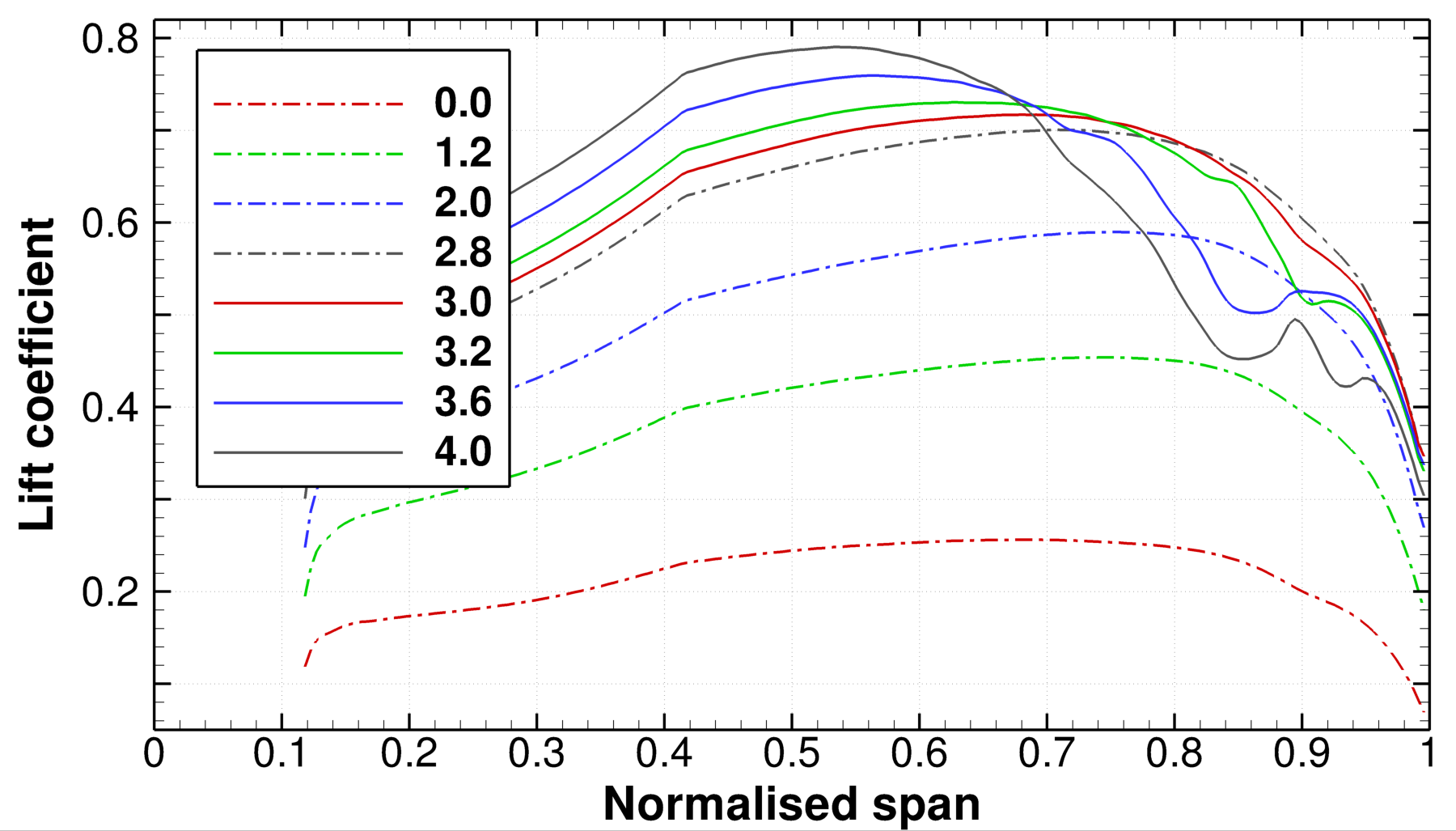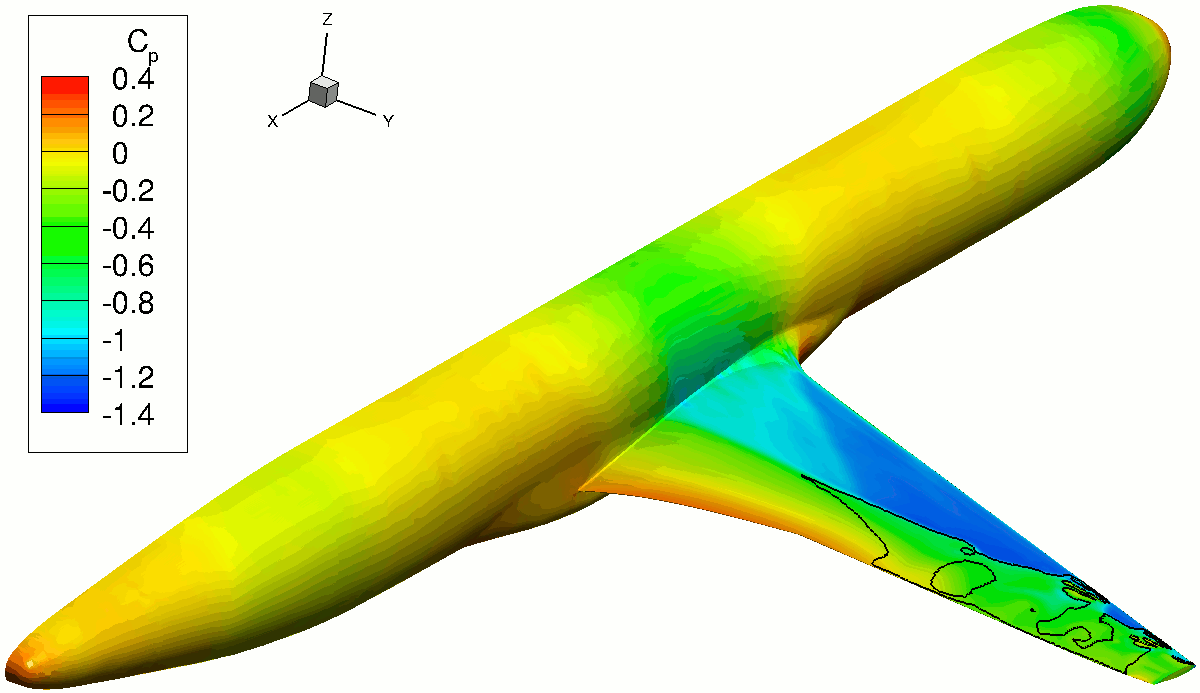Buffet Control of Transonic Wings (BuColic)
Title :
Investigators :
Partner :
Sponsor :
Buffet Control of Transonic Wings (BuColic)
Timme, S. and Sartor, F.
Aircraft Research Association (ARA)
Clean Sky Joint Technology Initiative
Project Background
At cruise condition, the flow around a typical passenger aircraft is characterised by the presence of shock waves, which interact with the boundary layers developing over the wings. The consequence is the occurrence of large scale unsteadiness such as high-amplitude self-sustained shock movements, known as shock buffet. This can have a significant influence on the aircraft and often leads to undesirable effects such as loss of performance or structural damage.
Buffet is an important factor limiting the flight envelope of modern transport aircraft and there is an increasing interest in delaying buffet offset. The practical difficulties of modelling buffet have been known for many years and much research has been undertaken with ever more sophisticated modelling tools to analyse the phenomenon. More recently attempts have been made to reduce the effect of buffet by active or passive means. This work programme aims to significantly improve our understanding of the underlying flow physics and to develop techniques to predict buffet in a practical time-scale for industrial aircraft design.
The objectives of the BuColic project are to advance the state of the art in areas including:
Increased understanding of the flow physics of 3D transonic wing buffet;
Increased understanding of the parameters that affect 3D buffet;
Develop an industrialised CFD method able to predict buffet for routine use during in developing control devices for wing design;
Improved understanding of buffet control devices to improve performance of next generation wings.
The DLR TAU code will be used in URANS and Detached Eddy Simulation modes to make time-accurate simulations aiming at reproducing the buffet phenomenon. A central computing cluster will be accessed for these computationally demanding calculations. The approach proposed for the CFD calculations is to demonstrate and evaluate the use of the well established DLR TAU code for the wing-body test case, including validation against the experimental measurements. Buffet will be investigated considering many combination of angles of attack and Mach numbers, with particular attention to the onset condition. Then, flow control with vortex generators will be incorporate into the simulation, fully resolved in the mesh and also with simplified treatment of the boundary conditions to reduce computational cost. The development of a model reduction approach as a potential design tool will also be considered.
Results of Steady-State simulations
Click on the following images to enlarge the view.
Drag polar for different Mach number. Each point in the plot is the result of a steady-state simulation, obtained doing angle-of-attack sweep for each Mach number. At high incidence, the simulations fail to converge, suggesting the presence of large separated zone.
Span-wise distribution of sectional lift coefficient for increasing angle of attack at Mach 0.80. The figure shows the pressure loss due to the shock-induced separated zone, which causes an abrupt drop in the sectional lift coefficient near the wing tip. The separation moves towards the fuselage when increasing the angle of attack.
Results of Time-Accurate simulations
Click on the following images to enlarge the view.
Time histories of lift coefficient for angles of attack presenting shock oscillations at Mach 0.80. The mean value of the lift and the amplitude of the oscillations increase when increasing the angle of attack.
Power Spectral Density of the unsteady lift coefficient at Mach 0.80. At low angle of attack, periodic motions are observed. Then, the peak describing the shock unsteadiness to move towards lower frequency and to become wider. At high angle of attack, the shock unsteadiness is characterised by non-periodic motions.
Pressure distribution on the surface of the model when shock buffet is fully developed. The shock-induced separated zone in the outboard part of the wing presents aperiodic motions. The solid line indicate the location of the separated region.
References
More details can be found in the following publications:
Refereed Journals
Conference Papers
Sartor, F. and Timme, S., "Delayed Detached-Eddy Simulation of Shock Buffet on Half Wing-Body Configuration", 15th AIAA Aviation Technology, 22 – 26 June 2015. Dallas, TX
Timme, S. and Sartor, F., "Passive control of transonic buffet onset on a half wing-body configuration", International Forum on Aeroelasticity and Structural Dynamics (IFASD), 28 June – 2 July 2015. St. Petersburg, Russia
Sartor, F. and Timme, S., "Mach Number Effects on Buffeting Flow on a Half Wing–Body Configuration", 3AF International Conference on Applied Aerodynamics, 30 March – 1 April 2015. Toulouse, France
Sartor, F. and Timme, S., "Reynolds–Averaged Navier-Stokes Simulations of Shock Buffet on Half Wing-Body Configuration", 53rd AIAA Aerospace Sciences Meeting, Kissimmee, FL, Jan. 2015.
AIAA-2015-1939





